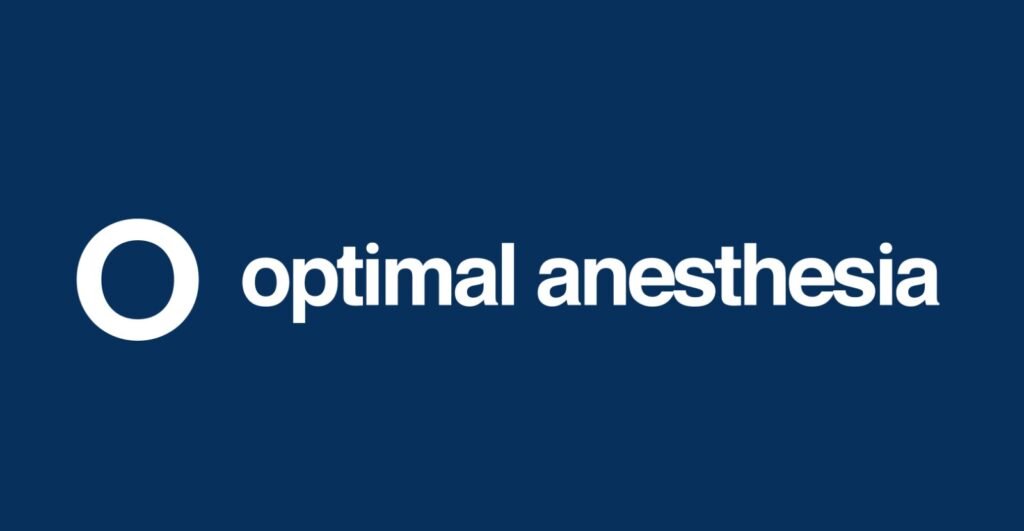The aging process brings profound physiological changes that significantly impact the pharmacokinetics and pharmacodynamics of drugs used in anesthesia. Alterations in body composition, organ function, and receptor sensitivity can affect drug distribution, metabolism, and clearance, making older adults more vulnerable to adverse effects. For anesthesiologists, understanding these changes is crucial for tailoring anesthesia care to ensure safety and efficacy. This article explores the key physiological and pharmacological shifts associated with aging and their clinical implications in anesthesia practice.
Changes in Body Composition with Age:
The anatomical and physiological alterations linked to ageing significantly influence the administration of anaesthesia in elderly patients. In order to get the best perioperative results, anaesthesiologists must modify their procedures to meet the specific requirements of this age group due to changes in body composition, including increased fat mass, decreased lean body mass, and changes in total body water.

1. Increased Fat Mass
With age, total body fat generally increases, characterized by an accumulation of visceral fat around internal organs, particularly in the abdominal region, while subcutaneous fat may decrease. Research indicates that after the age of 30, body fat steadily increases, with older adults having nearly one-third more fat compared to their younger counterparts (Yoo HJ, Choi KM. “Aging and Imaging Assessment of Body Composition: From Fat to Sarcopenia,” Aging Clin Exp Res. 2013;25(1):65-72.
2. Decreased Lean Body Mass
Lean body mass (LBM), which comprises muscle, organs, and bone, declines with age. This reduction, known as sarcopenia, leads to a decreased metabolic rate and overall physiological function. The loss of muscle mass significantly impacts the body’s ability to metabolize and respond to drugs (Janssen I et al. “Skeletal muscle mass and distribution in 468 men and women aged 18–88 yr,” J Appl Physiol. 2000;89:81-88.
3. Total Body Water Changes
Aging is also associated with a reduction in total body water (TBW). Younger individuals possess a higher percentage of body water compared to older adults, who experience a decline in both intracellular and extracellular fluid compartments. These changes directly affect the distribution of hydrophilic (water-soluble) drugs (Chumlea WC et al. “Total body water data for white adults 18 to 64 years of age: the Fels Longitudinal Study,” Kidney Int. 2001;59(5):1945-56.
IMPACT ON DRUG DISTRIBUTION:
Aging significantly affects the volume of distribution (Vd) of hydrophilic and lipophilic drugs due to changes in body composition, such as reduced body water and increased fat content. These alterations influence drug concentrations and effects, requiring careful dose adjustments in the geriatric population.
Reference
Rang, H. P., Dale, M. M., Ritter, J. M., Flower, R. J., & Henderson, G. (2015). Rang and Dale’s Pharmacology (8th ed.). Elsevier.

- Hydrophilic Drugs
Aging decreases lean body mass (LBM) and total body water (TBW), reducing the volume of distribution (Vd) for hydrophilic drugs. This reduction leads to higher plasma concentrations and an increased risk of toxicity. For example, gentamicin and digoxin, primarily distributed in the water compartments of the body, require lower doses in older adults to avoid adverse effects due to reduced body water (McLean & Le Couteur, 2004; Routledge et al., 2004).
Similarly, rocuronium, a hydrophilic neuromuscular blocking agent, demonstrates significant pharmacokinetic changes with aging. Research by Wright et al. (1993) shows that elderly patients exhibit higher plasma concentrations and a prolonged duration of action for rocuronium. These changes are attributed to the reduced Vd and altered clearance rates in the geriatric population.
Dose adjustments and careful monitoring for hydrophilic drugs like rocuronium are crucial in older adults to ensure effective therapy while minimizing the risk of adverse effects.
References
- McLean AJ, Le Couteur DG. Aging Biology and Geriatric Clinical Pharmacology. Pharmacological Reviews.2004;56(2):163–184.
- Routledge PA, O’Mahony MS, Woodhouse KW. Adverse Drug Reactions in Elderly Patients. British Journal of Clinical Pharmacology. 2004;57(2):121–126.
- Wright PM, Caldwell JE, Miller RD. Pharmacokinetics and Pharmacodynamics of Rocuronium (ORG 9426) in Elderly Patients. Anesthesia & Analgesia. 1993;77(6):1193–1197.
2. Lipophilic Drugs
The increase in body fat with aging expands the Vd for lipophilic drugs, resulting in prolonged half-lives and extended drug effects. For instance, benzodiazepines such as diazepam and opioids like fentanyl and morphine accumulate in fat stores, which may lead to prolonged sedation and respiratory depression in elderly patients (Greenblatt, D. J., Harmatz, J. S., & Shader, R. I. (2003). Clinical pharmacokinetics of benzodiazepines in the elderly: Therapeutic implications. Clinical Pharmacokinetics, 42(13), 1033–1042.) (Klotz, U. (2009). Pharmacokinetics and drug metabolism in the elderly. Drug Metabolism Reviews, 41(2), 67–76). For this reason, lower initial doses and careful titration are recommended.
Liver and Renal Clearance Tests to Assess Drug Metabolism
Drug metabolism and clearance are critical considerations in pharmacotherapy, as they ensure drugs are effectively processed and eliminated to achieve therapeutic effects and minimize toxicity. The liver and kidneys play central roles in this process. Evaluating their function involves specific tests that offer insights into how the body metabolizes and clears drugs.
1. Liver Function Tests (LFTs)
Liver function tests (LFTs) evaluate the liver’s ability to metabolize and clear drugs by assessing liver integrity, synthetic capacity, and enzymatic activity.
- Alanine Transaminase (ALT) and Aspartate Transaminase (AST): Elevated levels of these enzymes indicate hepatocellular damage. As markers of liver cell integrity, abnormal ALT and AST levels suggest impaired hepatic metabolism, potentially altering drug clearance (Liver Function Assessment by Drug Metabolism – ACCP Journals, 1990).
- Albumin Levels: Low albumin levels reflect diminished liver synthetic function. Since albumin binds to drugs in plasma, reduced levels can lead to altered drug distribution and metabolism (Hepatic Clearance Overview – ScienceDirect Topics, 2024).
- Bilirubin: Elevated bilirubin levels signify impaired hepatic function or bile duct obstruction, hindering the clearance of conjugated drugs. Total and direct bilirubin tests are crucial in assessing this aspect of liver function (Clearance Tests of Liver Function – PubMed, 2024).
- Prothrombin Time (PT): Prolonged PT reflects reduced hepatic synthesis of clotting factors, indicating significant liver dysfunction that could impair drug metabolism (Liver Function Assessment by Drug Metabolism – ACCP Journals, 1990).
- Specific Drug Metabolism Tests: The clearance rates of substances like caffeine or antipyrine directly measure hepatic metabolic capacity, offering a focused evaluation of liver drug metabolism (Clearance Tests of Liver Function – PubMed, 2024).
2. Renal Function Tests (RFTs)
Although renal function tests primarily assess kidney health, they are essential for understanding the elimination of drug metabolites processed by the liver:
- Serum Creatinine and Blood Urea Nitrogen (BUN): These standard renal markers evaluate kidney function. Elevated levels can reflect reduced renal clearance of drug metabolites processed by the liver (Measurement of Renal Function During Drug Development – PMC, 2024).
- Creatinine Clearance: This test estimates renal filtration efficiency and provides insights into the elimination of drug metabolites that require renal clearance (Creatinine Clearance Test: Purpose, Levels & Results – Cleveland Clinic, 2024).
- Glomerular Filtration Rate (GFR): GFR quantifies renal filtration efficiency and is critical for determining the clearance of renally excreted drugs (Measurement of Renal Function During Drug Development – PMC, 2024).
Integration of Liver and Renal Assessments
Comprehensive evaluation of drug clearance requires the integration of both hepatic and renal function assessments. Drugs with high hepatic extraction ratios depend on liver blood flow, while those undergoing hepatic metabolism may produce metabolites requiring renal excretion. Advanced studies like hepatic extraction ratio analysis and cytochrome P450 enzyme profiling enhance the understanding of these processes (Hepatic Clearance Overview – ScienceDirect Topics, 2024).
Pharmacodynamic Considerations for Anesthetic Pharmacology in Elderly Patients
The aging process induces profound physiological changes that significantly affect the pharmacodynamics of anesthetic agents. Understanding these changes is essential for anesthesiologists to ensure patient safety and effective perioperative management. This article explores the altered pharmacodynamics in aging, increased sensitivity to anesthetic agents, impaired homeostasis, and practical strategies for tailoring anesthetic care for elderly patients.
1. Altered Pharmacodynamics in the Elderly
Aging is associated with significant physiological changes that influence how drugs interact with the body:
- Receptor Function and Sensitivity:Aging results in reduced receptor density and altered receptor function, particularly in neurotransmitter systems such as gamma-aminobutyric acid (GABA), nicotinic, and acetylcholine receptors. These changes heighten the clinical effects of anesthetic agents, leading to reduced dosing requirements. For instance, the reduced sensitivity of β-adrenergic and muscarinic receptors also contributes to impaired stress responses during anesthesia (Weiskopf RB, 1998, Anesthesia and Analgesia).
- Clinical Implications:Exaggerated responses to standard doses of anesthetics are common in elderly patients, necessitating careful dose adjustments to achieve the desired effects without toxicity (Ebert TJ, 1996, Clinical Pharmacokinetics).
2. Increased Sensitivity to Anesthetic Agents
Elderly patients display increased sensitivity to general and local anesthetics, necessitating tailored dosing strategies:
- Minimum Alveolar Concentration (MAC):The MAC of inhaled anesthetics decreases by approximately 6% per decade, reflecting age-related changes in neuronal ion channel activity and synaptic plasticity (Mapleson WW, 1996, British Journal of Anaesthesia).
- Opioid Sensitivity:Enhanced sensitivity to opioids such as sufentanil and alfentanil requires precise titration to minimize risks of respiratory depression and prolonged sedation (Becker DE, 2012, Anesthesia Progress).
- Propofol Dosing:Reduced propofol doses are needed for induction to avoid hemodynamic instability. Studies suggest a 25–50% reduction in induction doses for elderly patients compared to younger adults (Short TG et al., 1991, British Journal of Anaesthesia).
3. Impaired Homeostasis in Aging
The aging process diminishes the functional reserve of organ systems, affecting the body’s ability to maintain homeostasis:
- Neuroplasticity and Neurotransmitter Decline:Reduced neurotransmitter levels and neuroplasticity increase the risk of postoperative delirium and cognitive dysfunction in elderly patients (Evered L et al., 2016, British Journal of Anaesthesia).
- Cardiovascular and Respiratory Reserve:Aging-related decreases in cardiac and pulmonary reserve complicate hemodynamic and respiratory stability during anesthesia. Reduced baroreceptor sensitivity and diastolic function heighten the risk of intraoperative hypotension (Partridge JS et al., 2018, Age and Ageing).
Adjustments in Anesthetic Pharmacology
Tailoring anesthetic care for elderly patients involves specific strategies:
- General Anesthesia:Lower induction doses of propofol and reduced concentrations of inhaled anesthetics (such as sevoflurane and desflurane) are necessary to minimize adverse effects (Weiskopf RB, 1998, Anesthesia and Analgesia).
- Regional Anesthesia:Reduced doses of local anesthetics are recommended to prevent prolonged motor block and toxicity (Becker DE, 2012, Anesthesia Progress).
- Opioid Use:Vigilant monitoring and minimal effective dosing of opioids help avoid respiratory complications and prolonged sedation (Short TG et al., 1991, British Journal of Anaesthesia).
Practical Strategies for Anesthesiologists
To optimize perioperative outcomes in elderly patients, anesthesiologists should:
- Start Low, Go Slow:Gradual dose escalation ensures effective therapy while minimizing adverse effects.
- Comprehensive Preoperative Assessment:A thorough evaluation of cardiovascular, respiratory, and neurological function aids in planning individualized anesthetic care (Partridge JS et al., 2018, Age and Ageing).
- Enhanced Monitoring:Continuous intraoperative and postoperative monitoring is critical for early detection and management of complications such as hypotension and hypoxia.


